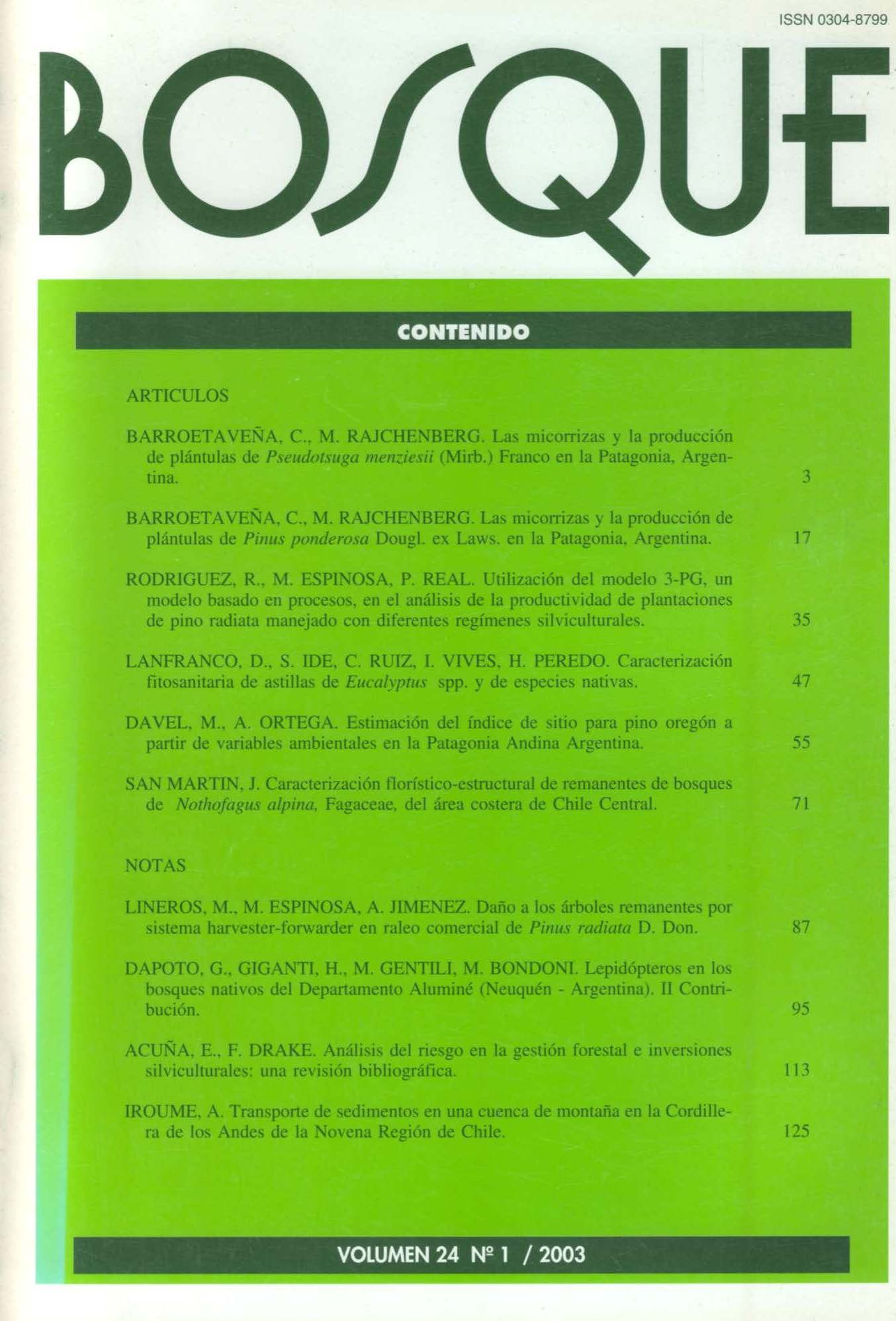Sediment transport in a mountainous catchment in the Andes of the Ninth Region of Chile
Main Article Content
Abstract
The relative importance of the suspended and bed-load transport mechanisms were studied for a 40-month period in a 592.8-ha catchment in the Andes Mountains, in the Ninth Region of Chile. The relationships between suspended sediment concentrations and discharge, and bed load and discharge, were examined to calculate the total sediment load in 6,381 t from the studied catchment area. Suspended sediments comprise 26% of total load, whereas bed load comprises the remaining 74%, which differs from the results obtained for the forested catchments located on clayed soils in the Tenth Region, where bed load was negligible compared with suspended load. For the study period, the mean annual specific degradation was 323 t/km2, varying between 48 and 700 t/km2. With a Melton Index of 0.313 upstream from the gauging station, the studied catchment behaves as a “bed-load” transport type of torrent. However, the sediment-transport mechanism characteristics and soil and topographic conditions of this catchment suggest that the major geomorphological changes in the drainage network are associated with torrential peak flows with high bed-load transport or with debris flows or floods.

